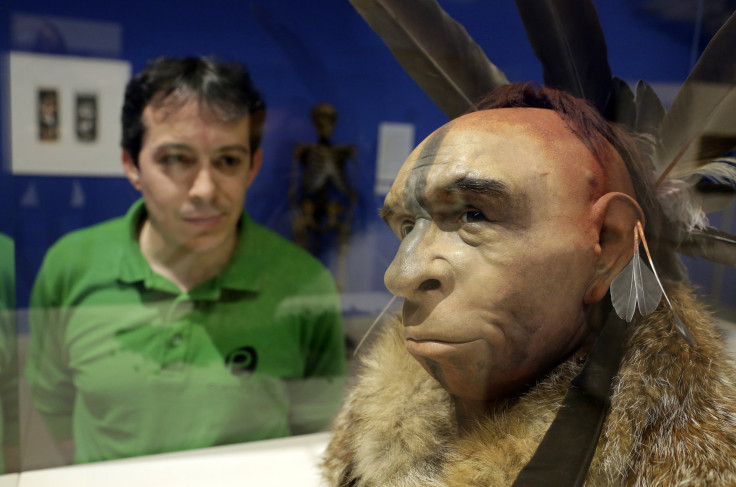Autism Exclusive To Humans, Neanderthals Lack DNA Sequence Responsible For Disorder

A new study has found that a structure that may be the biggest known genetic difference between humans and Neanderthals is responsible for making the human race susceptible to autism.
Researchers at the University of Washington, led by genome scientist Evan Eichler published the study Thursday in the journal Nature.
They compared the genome of modern humans with the genetic code for chimps, gorillas and orangutans, as well as Neanderthals and Denisovans, and discovered that a section of our DNA — on chromosome 16 that contains 28 genes — is unique to humans and emerged around 280,000 years ago.
This section is surrounded by blocks of DNA with repeated sequences. There are cases where both strands of a segment of DNA are flanked by highly identical sequences, making them vulnerable to copy-number differences during cell division — including deletion, duplication and others. Deletion causes the loss of the section’s 28 genes, resulting in autism.
Autism is the term used for a group of complex developmental brain disorders, referred to as autism spectrum disorders. These are caused by a combination of genes and environmental influences and are characterized by communication difficulties, social and behavioral challenges, and repetitive behaviors. An estimated 1 in 68 children in the U.S. is on the autism spectrum, according to the New York-based Autism Speaks.
Humans are the only ones to have this structure in the 16p11.2 region.
“Most duplications in our genome are millions of years old, and the speed at which this structure transformed our genome is unprecedented,” said Eichler, in a press release. “The wide and rapid distribution of these copy-number variants suggests the genes within the repetitive sections confer benefit that outweigh the disadvantages that come with the increased risk of autism in some offspring, should deletion occur.”
The structure, however, also contains a beneficial gene called BOLA2 that seems to form a complex with another protein — glutaredoxin 3 — that allows the cells to capture iron more efficiently and make it accessible to proteins. This benefit can be seen best early in cell development.
“This ability to help humans to acquire and use this essential element early in life might confer a significant enough benefit to outweigh the risk of having some offspring with autism,” Eichler said.
In addition to this, 16p11.2 appears to include a new gene created by fusing two regions of a BOLA2 gene with three regions from another gene. According to Eichler, this new gene may be the first completely new gene that distinguishes humans from the Neanderthals and ancient hominins.
With the role of the new protein remaining unknown, Eichler added, “We’re going to work with other research teams to find out what it does but so far we haven't a clue.”
© Copyright IBTimes 2024. All rights reserved.






















